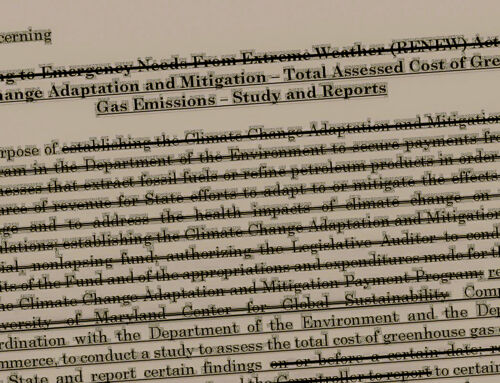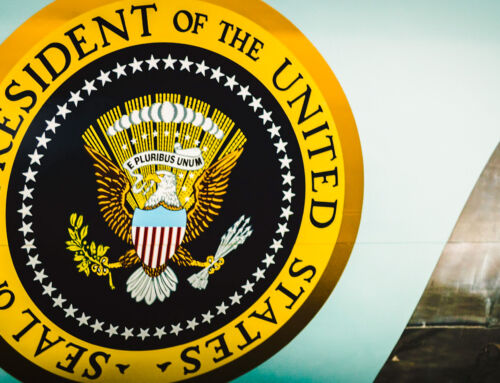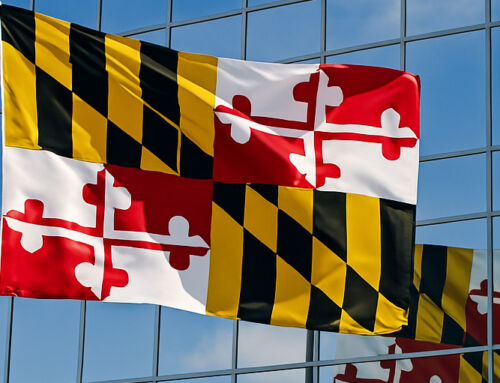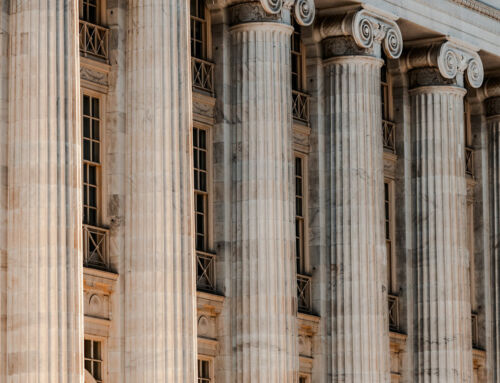View by Topic
Recent Articles
-
New Environmental Laws from the 2025 Maryland Legislative SessionSaturday, April 26th, 2025
-
Migratory Bird Treaty Act Does Not Prohibit Incidental Take – AgainSaturday, April 19th, 2025
-
President Trump’s Bold Step to Rein in State Overreach in Climate ChangeSaturday, April 12th, 2025
-
Mandatory GHG Disclosures in Maryland Real Estate ContractsSaturday, April 5th, 2025
-
NYC Building Electrification Ruling is Interesting But Not a Game ChangerSaturday, March 29th, 2025
View by Month/Year
“Green Building Law Update” Headlines
Recent Articles & News from
Stuart Kaplow’s blog
at GreenBuildingLawUpdate.com
- New Environmental Laws from the 2025 Maryland General Assembly Session April 27, 2025
- Migratory Bird Treaty Act Does Not Prohibit Incidental Take – Again April 20, 2025
- President Trump’s Bold Step to Rein in State Overreach in Climate Change April 13, 2025
- Mandatory GHG Disclosures in Maryland Real Estate Contracts April 6, 2025
Subscribe to the Green Building Law Update!
Stuart Kaplow brings his expertise and extensive experience to the table with his unique digital publication, "Green Building Law Update". Subscribers receive regular updates to keep them informed about important issues surrounding Environmental Law, Green Building & Real Estate Law, as well as the emerging demand for Environmental Social Governance (ESG).
Get fresh content through the lense of Stuart Kaplow's cutting-edge expertise, innovative commentary and insider perspective. Don't miss another issue! Subscribe below.
Green Building Law in Baltimore City is a Game Changer
Building green is the law in Baltimore City. And while the mandatory requirement for all to build green has been in effect since July 1, 2009, the City, just last week, publicly released a draft of a portion of the Baltimore City Green Building Standards.
Make no mistake, Baltimore City is not green washing. To the contrary, its green building law is the most sweeping of that in any major city in the country. It is a game changer!
Baltimore City Building Code, Chapter 37 mandates that all newly constructed, extensively modified non-residential, and specific multi-family residential buildings that have or will have at least 10,000 square feet of gross floor area, “for which a building permit application is filed on or after July 1, 2009 must achieve a silver-level rating in the appropriate LEED rating system, as certified by the Green Building Council”.
City Housing Department officials have issued guidance that “extensively modified” is a modification that alters more than 50% of the building’s gross floor area (such that many major renovations will have to be LEED silver certified). Also subject to the mandate are multi-family residential buildings that contain 5 or more dwelling units and are taller than 3 stories; or mixed use buildings that contain a residential component and are taller than 3 stories.
The City Code further requires that “the Building Official must issue regulations to administer .. [this law and that] those regulations must specify: 1. The LEED rating system, and any equivalent energy and environmental design standard, that applies to each type of covered building.”
Significantly, the City announced this past week that officials are still in the process of promulgating those regulations (that were, arguably, to have been effective July 1, 2009). The regulations are now expected to be released in January, 2010.
As a key component of those regulations, the City is developing its own “equivalent” green building standards, based largely upon the LEED v3 rating standards, layered with fast, flexible new approaches to sustainability taking advantage of the powerful opportunities and challenges of building in Baltimore. A proposed City scorecard of 150 credits (versus 110 credits on a LEED scorecard) has been released for new construction, however, it remains only a proposal and “until the development of the Baltimore City Green Building Standards is completed, the particular .. LEED rating system that applies to the project should be followed.”
The breakthrough draft regulations will create the “Baltimore City Green Building Standards” enabling an applicant to satisfy the law with either at a minimum LEED silver certification or obtain a “2 Star” (on a 5 star scale) City approval under those City Green Building Standards.
As currently envisioned, the regulations will be officially promulgated in January 2010, after which time the City Green Building Standards will be an available alternative.
Of great import, despite what some have characterized as the express language of the law, new written advice from the Building Official, provides, “until the release of the new Baltimore City Green Building Standards you will not be required to obtain certification from the U.S. Green Building Council .. while it is not necessary, .. this is a step that building owners may want to pursue.” That is, an applicant may, apparently, demonstrate that the project is LEED silver “certifiable” but not necessarily pursue LEED certification.
Additionally, the Building Official has announced that “6 months from the date of release of the Baltimore City Green Building Standards, projects applying for a permit and electing the LEED option, will be required to obtain certification from the USGBC” .. as opposed to the project being LEED certifiable.
To comply with the requirement in the law that the applicant for a building must submit “design plans for the building that are likely to achieve the applicable standard,” even those projects electing to pursue LEED silver certification must make a submittal at the time of permitting that includes: LEED registration documentation, the design credit review submittal package, a LEED scorecard, and a detailed LEED checklist signed by a LEED AP.
An Occupancy Permit for projects pursuing LEED silver certification, will not be held for actual certification by GBCI. But rather, the LEED checklist submitted at building permit, will need to be signed by the LEED AP with an accompanying affidavit verifying that all indicated credits have been satisfied. The law authorizes an “enforcement mechanism” and City officials are likely to propose such a ‘hammer’ when the regulations are promulgated.
Those submittals are, in and of themselves, not significantly less burdensome than the submittals anticipated for the City Green Building Standards path, however, it appears from the draft new construction scorecard that the compliance will be significantly faster, cheaper, and possibly even ‘better for the planet’ when pursuing the City path?
Full of partial waivers may be granted by the Building Official and that process will be specified in the regulations. Interesting, the City has floated the idea of individual credit waivers to the extent that compliance would be impractical or unduly burdensome, but that partial waiver would only be applicable to a project pursuing the City Green Building Standard path.
City officials have proven to be particularly helpful during the period of implementation of this sweeping Green building mandate; and such is against a backdrop of the concomitant major changes in the zoning regulations and pendent wholesale revisions to the storm water management requirements.
The Green building law in Baltimore City is a game changer. There are opportunities to prosper and thrive in the greening of Baltimore.
If we can assist you in complying with the Baltimore City green building laws or with other innovation in green building and sustainable business, generally, please contact Stuart Kaplow at skaplow@stuartkaplow.com









